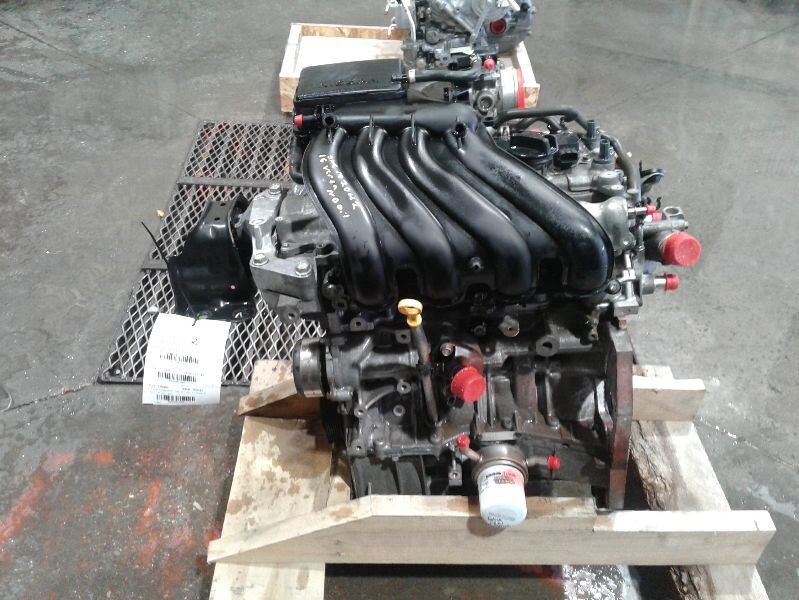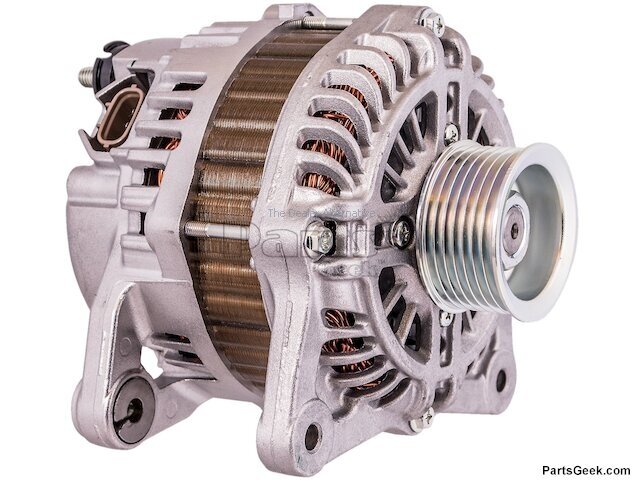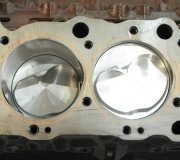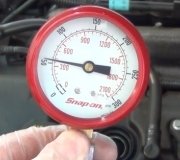Most people don't pick up on that. The issue has to do with the importance of using correct terminology in the classroom. DC generators do indeed put out direct current. The biggest drawback was the field windings were the stationary coils, that had the typical three amps flowing through them, and the output current was taken off the rotating armature. All that current had to pass through the brushes, so 30 amps was about the best you could get.
AC generators pass, at maximum, three amps through the brushes into the rotating field winding. That's real easy to do, and it has no effect on the output current rating of the unit. Where the confusion comes in, is the AC generator was developed by Chrysler for their 1960 models, and they copyrighted the term, "alternator". GM had their version in 1964, and Ford had theirs a year or two later, but they used the term "generator" in their service manuals. Regardless, everyone knows what we mean when we ask for an alternator. All of them put out three-phase output which is very stable and efficient, but it is three alternating current circuits. Only direct current can be stored chemically in a battery. It's the diodes that reroute the currents so it all goes the same way into the battery. Diodes are used in all electronic equipment that's plugged into house outlets, as far back as since we had electrical power in homes.
Chrysler was the world leader in innovations that benefitted car owners. That includes the first electronic voltage regulator in 1970, the first fully electronic ignition system in 1972 on Dodges and 1973 on Plymouths and Chryslers, the first computer-controlled ignition system for 1977, first anti-lock brakes in 1969, lockup torque converter in 1977, first to use air bags, first computer-controlled transmission in 1989.
Not all of those innovations were perfected right away. By the time all the bugs were worked out, other manufacturers had their versions. Today GM is one of the leaders in innovations, but theirs are designed to make more money after the sale. That includes computer modules that have to be purchased through the dealer and the dealer has to program them to your car. In a recent case, my friend already had the new module, then the dealer charged him $600.00 for the few minutes it took to install the software and program it to the truck. As with everything else, it gets copied by everyone later, so today we're all paying for these customer-unfriendly business practices.
Most import generators have the voltage regulator built in. The advantage is there's nothing to diagnose; just replace the assembly. The advantage to having the regulator be a separate module is you only have to replace the defective part, not everything. Chrysler domestic models have never used an internal regulator. GM was the only one that had theirs built in starting somewhere around 1972. In my opinion, it was the world's second best design. It was easy to diagnose, and it was easy to repair once the aftermarket industry made replacement parts available. GM dropped that nice design and went to, by far, the world's worst design starting with 1987 models. Ford also used to have a separate regulator, but around the early '90s, they went to a nice unit with the regulator bolted right on the back where it was easy to get to, diagnose, and replace. Later they added an extra cover to the back to make it very difficult to diagnose.
As for the fan, I think you'll find one in every generator, but some are inside and some are set on the shaft before the pulley is pressed on. All have a bearing in front and on back. In that respect, all of the designs work the same way.
Very often there's two, three, or four different current ratings for a generator for a given model. It's important to note that AC generators will only develop exactly the amount of current needed by the electrical system, and to recharge the battery, and no more. The original generator size was chosen to meet the highest demands of the car's electrical system. There's no advantage to switching to one with a higher current rating. It won't develop any more current. It simply has the capacity to develop a higher maximum current. All that's needed to achieve that higher capacity is to add a few inches of wire to each stator coil. You can switch to a generator with a different current rating, but there is one time that can cause a problem. On older cars, a fuse link wire was spliced into the wire going from the alternator's output terminal to the battery. Those are a small section of smaller diameter wire with insulation that won't melt or burn. On later models there's a very large fuse in the fuse box, and it's usually bolted in. Those fuse devices are sized at the factory based on the current rating of the generator being installed. If you switch to the larger generator, it still will only develop only as much current that's needed, except during the "full-load output current test". That is a professional test that is done to verify it can develop as much current as it's supposed to be capable of, and it will help identify when one diode has failed. This test just takes a few seconds, but a larger generator might be able to develop more current than the fuse is rated for. Fuse link wires used by Chrysler and older GMs, act like slow-blow fuses, so they might survive this test. Regular fuses that are bolted in will blow, but there's no actual defect. Just replace the fuse.
Remember when I said one of the things needed to generate a current is to have movement between the magnet and the piece of wire? And that the slower that movement is, the less efficient the generator will be? This relates to the pole pieces you asked about. The field winding is one long piece of wound-up wire, with a north and a south pole. The strength of the magnet is seriously increased by adding an iron core to concentrate the magnetic lines of force. They cut those pole pieces into a group of fingers that each has a north or south pole around them. Instead of switching polarity twice per revolution, you get about a dozen north / south transitions per revolution. In effect, the speed of the movement of the magnetic field is sped up a lot. That adds to its efficiency. Without those fingers, you'd need the engine to run at around 5,000 rpm before substantial current would start to be generated.
Saturday, March 9th, 2024 AT 3:33 AM





